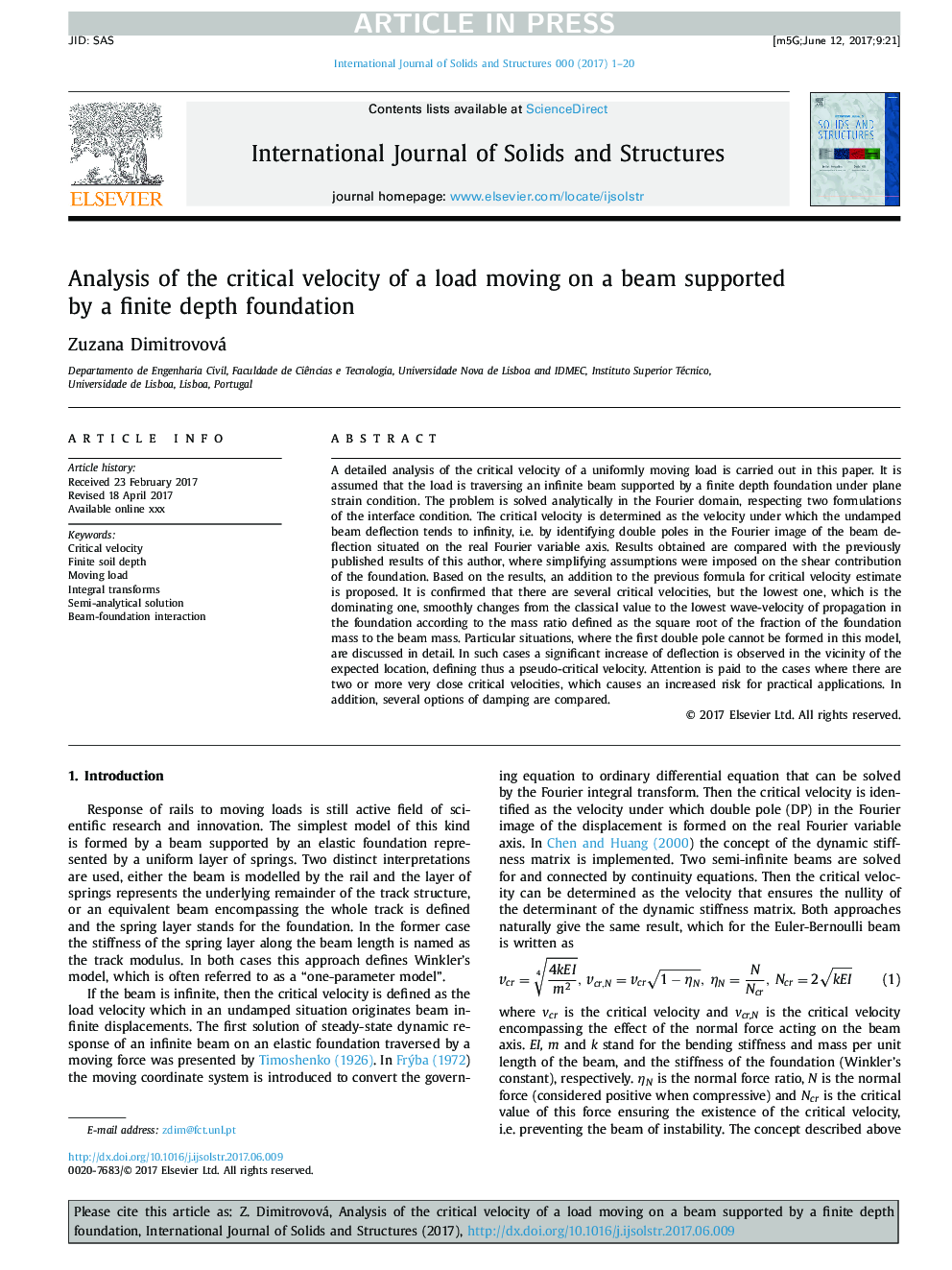| Article ID | Journal | Published Year | Pages | File Type |
|---|---|---|---|---|
| 4922338 | International Journal of Solids and Structures | 2017 | 20 Pages |
Abstract
A detailed analysis of the critical velocity of a uniformly moving load is carried out in this paper. It is assumed that the load is traversing an infinite beam supported by a finite depth foundation under plane strain condition. The problem is solved analytically in the Fourier domain, respecting two formulations of the interface condition. The critical velocity is determined as the velocity under which the undamped beam deflection tends to infinity, i.e. by identifying double poles in the Fourier image of the beam deflection situated on the real Fourier variable axis. Results obtained are compared with the previously published results of this author, where simplifying assumptions were imposed on the shear contribution of the foundation. Based on the results, an addition to the previous formula for critical velocity estimate is proposed. It is confirmed that there are several critical velocities, but the lowest one, which is the dominating one, smoothly changes from the classical value to the lowest wave-velocity of propagation in the foundation according to the mass ratio defined as the square root of the fraction of the foundation mass to the beam mass. Particular situations, where the first double pole cannot be formed in this model, are discussed in detail. In such cases a significant increase of deflection is observed in the vicinity of the expected location, defining thus a pseudo-critical velocity. Attention is paid to the cases where there are two or more very close critical velocities, which causes an increased risk for practical applications. In addition, several options of damping are compared.
Related Topics
Physical Sciences and Engineering
Engineering
Civil and Structural Engineering
Authors
Zuzana Dimitrovová,
